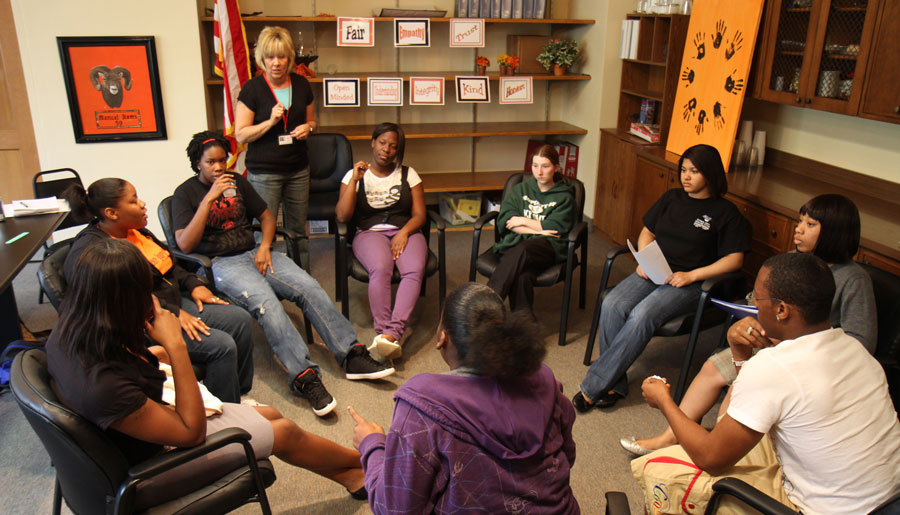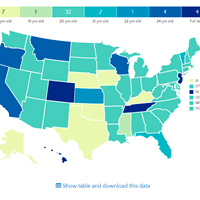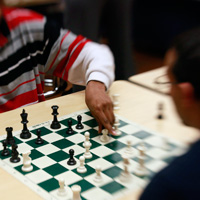
Summary
From 1996 to 2019, we made 425 grants totaling $218 million.
From 1996 to 2019, we supported reform in 40 states with a goal of accelerating a national movement to improve the lives of young people in contact with the law, while enhancing public safety and holding young offenders accountable for their actions. Primarily through the Models for Change initiative, we developed tools and research that advanced reforms to make the juvenile justice system more fair, effective, and developmentally appropriate.
We supported research, training, practical interventions, policy analysis, and public education that promoted a juvenile justice system that recognizes the developmental differences between adolescents and adults, links to other relevant agencies and organizations, and is accountable for public safety and the rehabilitation of young offenders. We took a distinctive approach to juvenile justice reform–one that was grounded in the growing body of behavioral and neuroscience research on youth development. The premise of our work was that an understanding of the scientific research on child and adolescent development and mental health would help policymakers and practitioners to make more informed choices in individual cases.
We implemented this strategy at four levels: developing a knowledge base and tools to inform decisions in policy and practice; developing and promoting model demonstrations of system-wide reform in targeted sites; translating knowledge into action through advocacy and dissemination; and accelerating the pace of state policy reform nationally. As the work came to a close, we focused on expanding the use of successful tools and approaches developed through Models for Change, including support for the network of resource centers that provide assistance to system leaders in the top areas of concern.

History of the Program
During the 1990s, 47 states passed laws that put more juveniles in adult criminal court, instituted harsher sanctions, and allowed adults and youths to be imprisoned in the same facilities. In 1996, we set a goal to reverse this course and to promote a rational, evidence-based juvenile justice system that holds young offenders accountable for their actions, promotes rehabilitation, enhances public safety, and lowers costs to taxpayers. We posited that policies informed by an improved understanding of adolescent psychological development and mental health would lead to greater public safety and better outcomes for youth.
Starting in 1996, we supported research, training, policy analysis, public education, and practical interventions across 14 states. The Research Network on Adolescent Development and Juvenile Justice provided the cornerstone of our juvenile justice strategy: its findings over ten years made it clear that adolescents are fundamentally different from adults. We found that treating juvenile offenders as adults, relying on incarceration, and failing to commit resources to rehabilitation and treatment is expensive, produces negative consequences, jeopardizes public safety, and compromises future life chances.
After five years, we expanded on the groundwork laid by the Research Network to help states become models of juvenile justice reform. In 2003, we launched Models for Change: Systems Reform in Juvenile Justice, a $100 million effort to develop successful state-based models of system-wide reform that other states could learn from and emulate. The initiative did not advance a single “model” system. Rather, it sought to demonstrate different ways to improve systems performance and outcomes in four core states—Pennsylvania, Illinois, Louisiana, and Washington. Through Models for Change, we endeavored to create a wave of juvenile justice reform built on new scientific evidence and knowledge of best practices, and we built on existing state and local reform efforts that were practical and feasible.
Targeted issues included racial and ethnic disparities, re-entry after incarceration, mental health, diversion, evidence-based practices, and the boundary between the juvenile and adult criminal systems. Local demonstration sites modeled best practices in these targeted areas and, once success had been demonstrated, promoted the activities as models for other jurisdictions to adopt.

Grantmaking Priorities
Models of Systems Reform
Through Models for Change, we supported efforts in key states to bring about changes in law, policy, and practice and to heighten interest in and provide models for juvenile justice reform nationwide. Initiative goals included greater use of evidence-based practices, improving re-entry and mental health services, and increasing community-based alternatives to incarceration. All sites worked to improve data collection and analysis for decision making and to eliminate racial and ethnic disparities.
Models for Change was active in 16 states: the four core states of Pennsylvania, Illinois, Louisiana, and Washington and 12 others—California, Colorado, Connecticut, Florida, Kansas, Maryland, Massachusetts, New Jersey, North Carolina, Ohio, Texas, and Wisconsin—through "action networks” focused on racial and ethnic disparities, mental health services, and the quality of juvenile indigent defense. These networks shared resources, learnings, and policy solutions that could be adapted to different local context, helping spread success state-to-state.
National Campaign to Reform State Juvenile Justice Systems
In 2011, we began a multi-funder collaborative effort to share the lessons of Models for Change and other reform initiatives to help build a wave of juvenile justice policy reform across the country. National campaign operations and activities included a central office that identified target states for policy reform and oversees state-based campaigns; investments in as many as 16 states to reform juvenile justice law and policy; and national communications and outreach to advance a national dialogue in support of widespread juvenile justice reform across the country.
Research
We supported research to inform the development of effective juvenile justice policies and practices, such as the Research Network on Adolescent Development and Juvenile Justice whose research addressed the competence of young people to stand trial, youthful immaturity and criminal responsibility, and desistance from criminal behavior. More recent research examined the process and effectiveness of systems reform in the Models for Change states, including studies of the consequences of mental health screening in pretrial detention, risk/needs assessment, financing systems change, benefit-cost analysis of juvenile justice programs and services, and interactions between schools and juvenile justice.

Legacy
We sought comprehensive systems change with research, network collaboration, national advocacy and continuing resources. Research from the program was cited in supreme court decisions that limited life sentences and outlawed the death penalty for juveniles, and many states raised the age at which adolescents can remain under the jurisdiction of the juvenile justice system or changed the law to require that a young person’s legal competency be assessed before he or she is transferred adult court. Action networks achieved positive results, implementing changes in practice or policy, supporting policy replication in other jurisdictions, sustaining changes beyond an initial implementation period, and in some cases acquiring sustaining funding for reforms from other sources. National campaign efforts resulted in the implementation of 208 reforms that promoted a fairer and safer juvenile justice system. Models for Change advanced reform in 35 states and continues to be a resource with research, tools, findings, and lessons for juvenile justice reform aimed at improving outcomes for youth and communities.
Program Evaluations
Grantmaking Highlights

Landmark Developments in Juvenile Justice Reform
January 25, 2016
Online Tool Tracks Juvenile Justice Policy and Practice Changes
May 28, 2014Research Network Findings on Juveniles Cited in Supreme Court Cases
November 25, 2009Supreme Court Eliminates Mandatory Life Without Parole for Juveniles
June 25, 2012Supreme Court Limits Life without Parole for Juveniles
May 27, 2010Supreme Court Ruling Protects Miranda Rights of Children
June 16, 2011
The Effects of Incarceration of Youth on Family Members
September 12, 2012Additional Resources
Staff
- Laurie Garduque, Director
-
Maurice Claussen, Program Officer
-
Patrick Griffin, Program Officer
-
Soledad McGrath, Program Officer


